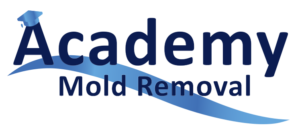Common Attic Mold Removal Mistakes You Should Avoid
September 21, 2024The Importance of Attic Mold Removal in Older Homes: Protect Your Investment
September 21, 2024Attic mold is a common problem for many homeowners and can lead to serious health and structural issues if not addressed promptly. Understanding the causes of mold and how to properly remove and prevent it is essential for maintaining a safe and healthy home. In this guide, we’ll cover everything you need to know about attic mold removal and provide tips for keeping your attic mold-free in the future.
What Causes Mold in the Attic?
Mold thrives in environments with excess moisture, making attics a prime location due to their tendency to accumulate humidity. Several factors can contribute to mold growth in the attic, including:
- Roof leaks: Water seeping through a damaged or worn-out roof is a common cause of mold growth.
- Poor ventilation: When air cannot circulate properly, moisture gets trapped, creating ideal conditions for mold to form.
- Improper insulation: Poor insulation can lead to condensation, especially during the colder months, which can foster mold growth.
Understanding these causes is the first step in attic mold removal and prevention.
Signs of Attic Mold
Before you can begin attic mold removal, it’s important to know how to detect mold early. Some signs to watch for include:
- Discoloration: Mold often appears as black, green, or white patches on wooden beams, insulation, or drywall.
- Musty odor: A strong, unpleasant smell can be a sign of mold, even if you can’t see it.
- Health symptoms: If your family members experience unexplained respiratory issues, allergies, or skin irritation, it could be related to mold exposure.
Regular attic inspections will help you catch mold problems early and make attic mold removal easier and more effective.
Step-by-Step Guide to Attic Mold Removal
If you’ve identified mold in your attic, it’s essential to act quickly. Follow these steps for safe and effective attic mold removal:
- Identify the Source of Moisture
Before removing the mold, you need to eliminate the source of the moisture. Inspect your roof for leaks and repair any damaged areas. Ensure your attic is properly ventilated to allow air to circulate and moisture to escape. Installing roof vents or attic fans can significantly reduce humidity levels.
- Wear Protective Gear
Mold can release harmful spores, so it’s important to protect yourself during attic mold removal. Wear a mask (preferably an N95 respirator), gloves, and safety goggles to minimize exposure to mold spores.
- Use Mold-Killing Solutions
For effective attic mold removal, clean the affected areas with a mold-killing solution. Commercial mold removers are available, or you can use natural alternatives like vinegar or hydrogen peroxide. Scrub the moldy surfaces thoroughly with a brush, ensuring that you reach every corner.
- Remove Contaminated Materials
In some cases, you may need to remove and replace materials like insulation or drywall that have been heavily infested with mold. Be sure to properly dispose of these materials to prevent further contamination.
- Dry and Ventilate the Area
After cleaning the mold, it’s crucial to dry the attic completely. Use fans and dehumidifiers to remove any remaining moisture. Proper ventilation is essential for preventing future mold growth, so make sure your attic has adequate airflow.
Preventing Future Mold Growth
The best way to avoid the need for future attic mold removal is through prevention. Follow these tips to keep your attic mold-free:
- Fix leaks immediately: Regularly inspect your roof for damage and repair any leaks as soon as possible.
- Improve ventilation: Ensure your attic has proper ventilation by installing vents or fans to keep moisture levels low.
- Control humidity: Use a dehumidifier in your attic, especially if you live in a humid climate. Keeping the humidity level below 60% will help prevent mold growth.
- Insulate properly: Ensure your attic is properly insulated to avoid condensation during cold weather. Good insulation can help regulate temperature and prevent moisture buildup.
When to Call a Professional
While small mold problems can often be managed by homeowners, extensive infestations may require professional help. If the mold covers a large area or if you’re unsure about handling the attic mold removal safely, hiring a mold remediation specialist is the best option. Professionals have the tools and expertise to remove mold thoroughly and prevent it from returning.
Conclusion
Attic mold removal is a vital part of maintaining a healthy home. By understanding the causes of mold, knowing how to detect it early, and following the proper steps for removal, you can protect your family from the harmful effects of mold exposure. Regular inspections, proper ventilation, and moisture control are key to keeping your attic mold-free in the long term.
